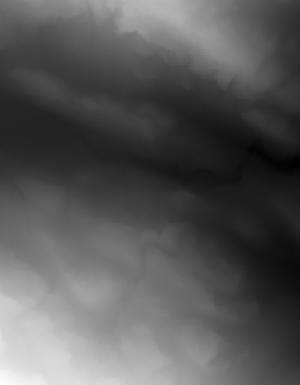

The core is split into the outer core and the inner core because the two layers differ in rigidity. The last mechanical layers of the earth are found in the core. The mesosphere is hotter than the asthenosphere, but it is rigid because it is experiencing more pressure than the layers above. The mesosphere is the layer below the asthenosphere. The rock in the asthenosphere could melt if exposed to the surface, but it is under extreme pressure causing it to flow like a plastic. It is considered plastic because the rock has the ability to flow more than a rigid layer, but not as easily as a liquid layer. The asthenosphere is under more pressure than the lithosphere and has a higher temperature. The tectonic plates of the lithosphere move and shift on the plastic layer called the asthenosphere. The lithosphere is divided into the tectonic plates, areas of continental crust and/or oceanic crust that move and shift over time. The lithosphere is rigid, and it includes the crust and the uppermost part of the mantle. The outermost mechanical layer is the lithosphere. The layers can be described as rigid, plastic or liquid in consistency. The five mechanical layers of the earth are defined by how the layers move. Although these layers may share common elements, the contents differ enough to create the distinct layers. It is under intense pressure and high temperatures, and it is the densest layer of the earth. The core is made of iron (Fe) and nickel (Ni). The final compositional layer of the earth is the core (approx.3,480 km thick). Below the crust lies the mantle (approximately 2,890 km thick.) The mantle is made of silicon (Si) and oxygen (O) like the crust, but it also contains large amounts of iron (Fe) and magnesium (Mg). Both types of crust cover the entire outer portion of the earth. 5-10km thick) than continental crust and younger too! Continental crust is on average 30 km thick, and contains the oldest rocks and minerals. Oceanic crust tends to be thinner (approx. The crust can be subdivided into two types – oceanic crust and continental crust. The crust is mostly made of elements like silicon (Si), aluminum (Al), potassium (K), calcium (Ca), oxygen (O), sodium (Na) and minerals made of these elements. It is the thinnest layer making up only about 1 percent of the earth. The three compositional layers of the earth are defined by significant changes in chemical composition. Although we only see the outermost layer of the earth, we have learned a lot about the layers underneath by looking at seismic waves and various rocks at the surface. The five mechanical layers are the lithosphere, the asthenosphere, the mesosphere, the inner core and the outer core. When we look at the mechanical properties of the layers, we are defining them as the mechanical layers. The compositional layers are the crust, the mantle and the core. When we look at the chemical composition of each layer, we are defining them as compositional layers. These layers are defined by either what they are made of or how they move. It has a diameter of about 6,400 km, and it is made of various layers that help change the surface of the earth. From the core to the crust, the Earth is a pretty big deal.


 0 kommentar(er)
0 kommentar(er)
